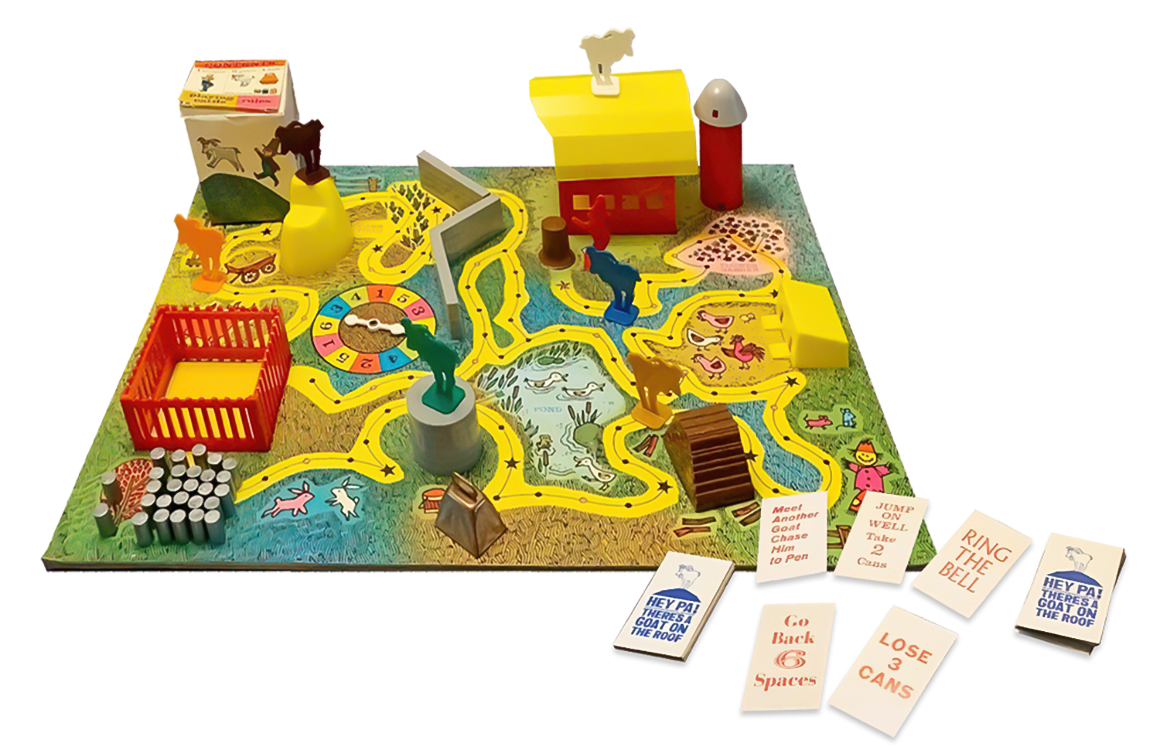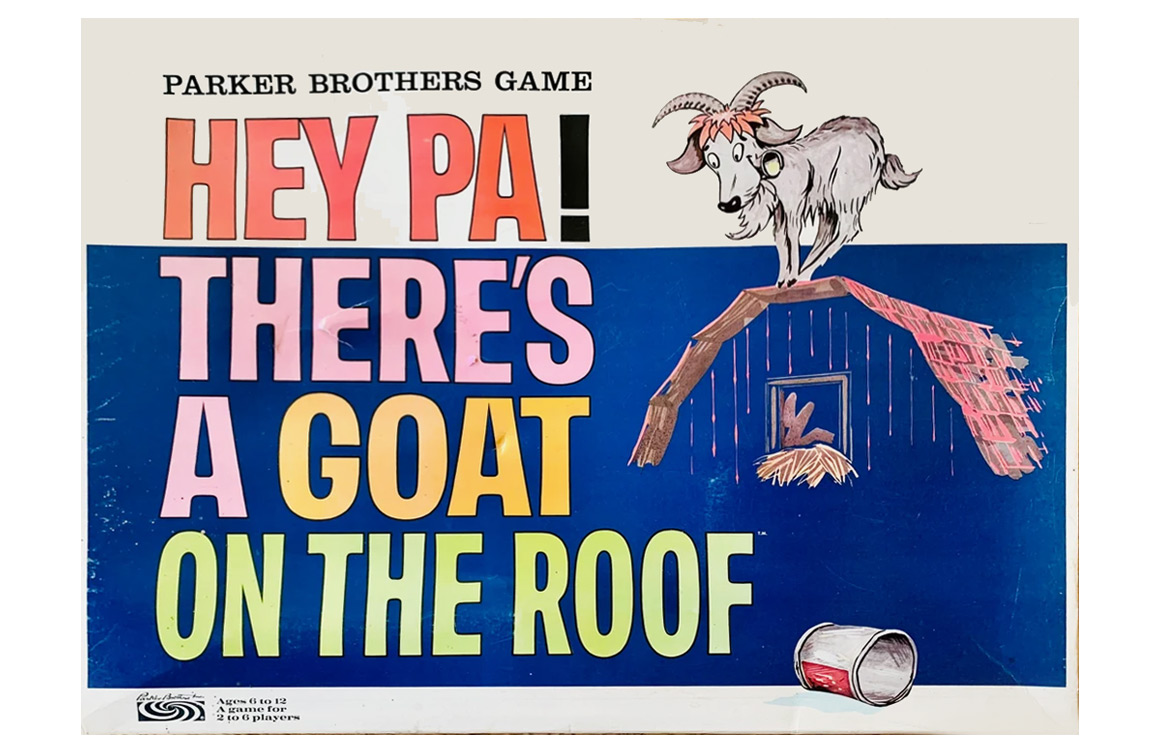Jumping goats were center stage in Parker Brothers’ whimsical Hey Pa! There’s a Goat on the Roof board game. Released in 1966, players spun-and-moved to navigate a series of bizarre rules and collect the most tin cans before someone successfully jumped their goat onto the roof of a farmer’s barn.
GAMEPLAY
The three-dimensional game board featured a traditional farm setting with a pond, chicken coop, corn field, well, and a barn with a silo. The large (over 18-inches square) playing surface was colourfully illustrated and included a built-in spinner.
To start, each player selected a Goat playing piece and set it in the Goat Pen among a collection of tin cans. Each turn, players spun for a number then moved their pawn that number of spaces along the yellow paths.
If a Goat landed on a space with a coloured dot by exact count, the player drew a Hey Pa! card and followed the instructions on it. Activities on these cards included directives to move to specific locations on the board, acquire or lose cans, and ring the game’s miniature cow bell. Ringing the bell triggered movement of the Farmer pawn between the inside of the barn and the nearby tree stump.
If a Goat was lucky enough to land on a space with a star by exact count, the player jumped their goat on top of the nearest object and collected a can from the pen.
To end the game, a player had to wait for the Farmer to be in the barn and jump onto the barn via the nearby tree stump in a single turn. Once that gravity-defying act occurred, the player acquired an additional 3 cans for their effort. The player with the most cans was declared the winner.
IN THE BOX
A complete game included a game board, deck of cards, 6vGoat playing pieces, 1 Farmer, a Bell, and a box of cans. Printed instructions were included in the box.
COLLECTOR CONSIDERATIONS
Perhaps not surprisingly, Hey Pa! There’s a Goat on the Roof wasn’t on the market for very long. Despite this, the bizarre nature of the game keeps it popular with vintage board game collectors.
Note: If you buy something using the eBay link in this story, we may earn a small commission. Thank you for supporting independent toy journalism!


